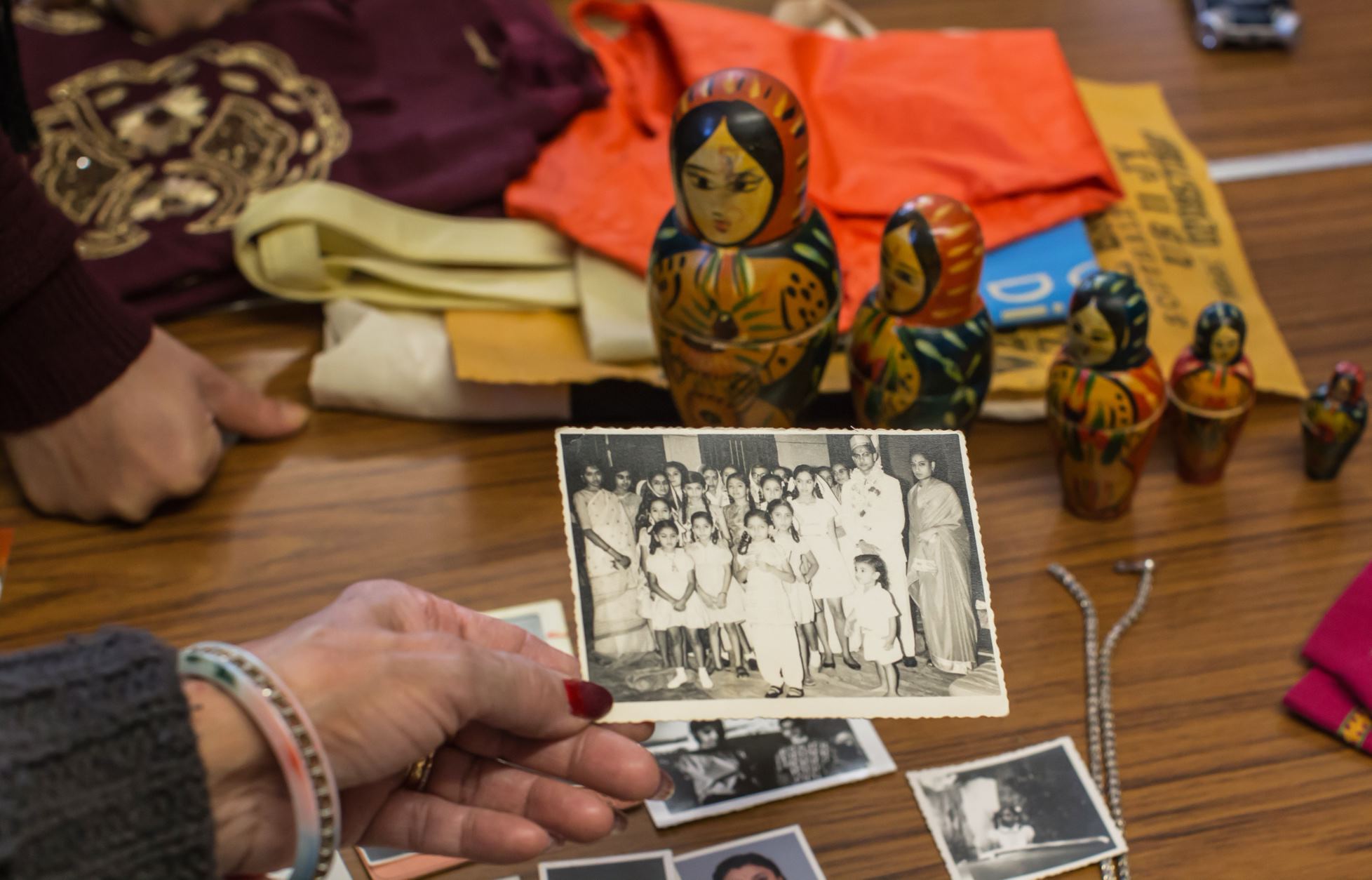The India at Home project explores memories and stories of India and how ‘India’ is imagined at home in Loughborough. This ongoing project started during the COVID-19 lockdown while everyone had to stay at home. We ask what photographs, objects and music are around the house that evoke memories of India. ‘India at Home’ is a broad title which is open to interpretation and open to the various ways ‘India’ is imagined. Contributions so far have included photos from visits to India, family photos from India and East Africa and photos of Bollywood LPs. These photos have evoked personal and family memories of India, memories of life in East Africa, memories of migration as well as Indian community events and cultural practices in Loughborough. The contributions to the project will form a virtual exhibition on this page.
If you would like to participate in the India at Home project, please get in touch with Jasmine Hornabrook j.hornabrook@lboro.ac.uk or (WhatsApp message only).
‘Home is here but still we remember our country.’

A photograph of my son’s wedding car and marriage hall
All my sons like India, my second and third son got married in India. Our relatives live in USA, England, New Zealand so it was easy to meet in Navsari, Gujarat. They all enjoyed getting married in India. In England, how can we do this decoration on the car? We can’t do anything, not that like! When we got to the hall the fireworks started and as we arrived they are dancing a garba outside. Everybody was dancing outside and then they entered into the hall. There’s lots of difference between here and there.
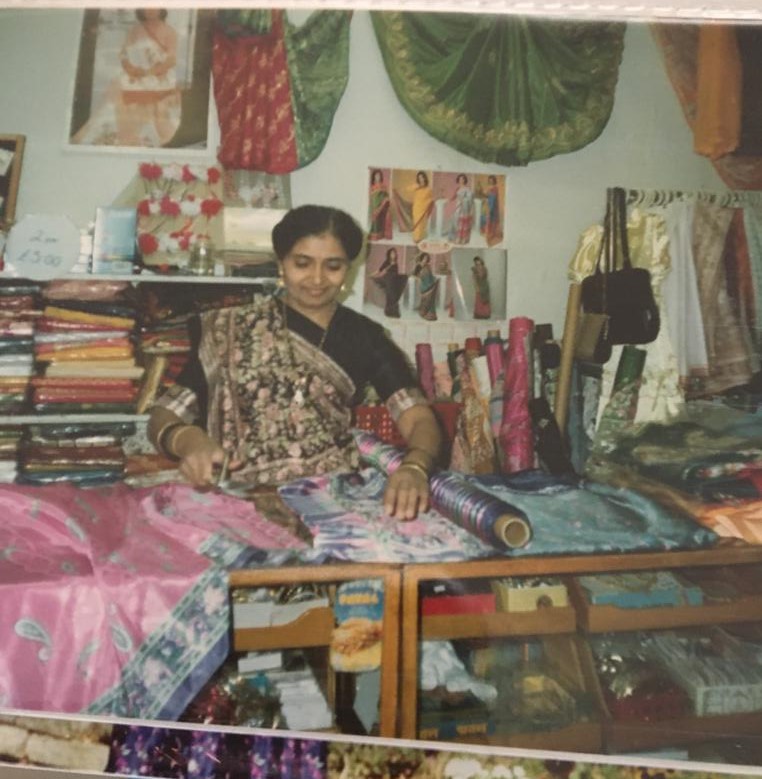
A photograph of cutting the 6 yards of sari fabric
That was such a happy time. It was my dream to have a sari shop. I started from the house. There was no sari shop in Loughborough at that time. People had young children and didn’t have cars then so they couldn’t go to Leicester. I used to buy Punjabi suit material, the saris came in rolls, we had to cut 6 yards and I made the sari. People used to love those saris as it was a completely different design than Leicester. I used to bring a lot of things for my shop from India. For my shop, I used to go for two weeks or something to India and bring back to sell.
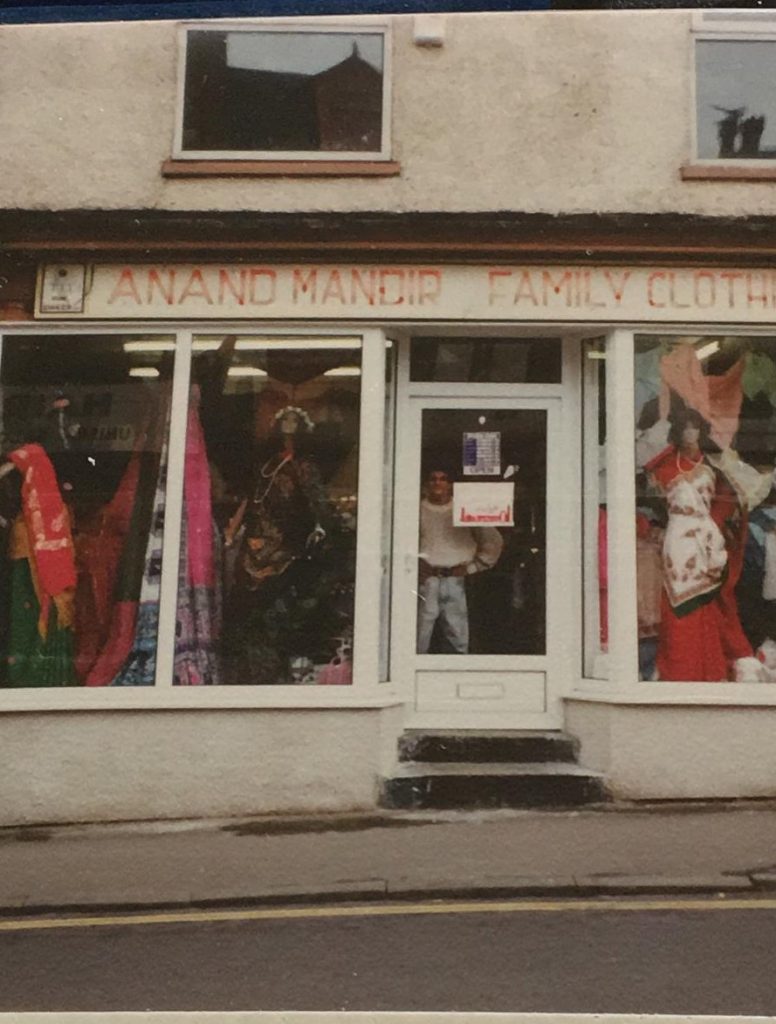
A photograph of the sari shop, opened in 1989, Loughborough
I miss my shop. That was a lovely time. I always miss my shop and that happy time. All the time people used to come, even at 5.30pm people were still there. There was a factory on Nottingham Road and Queen’s Road so at lunchtime all the Indian ladies used to come for the saris. So it was nice at lunchtime, people would come and talk and buy saris.
‘I feel like there have been many changes and everything, but you can feel, you were born here, in this town, and it’s like our hometown.’
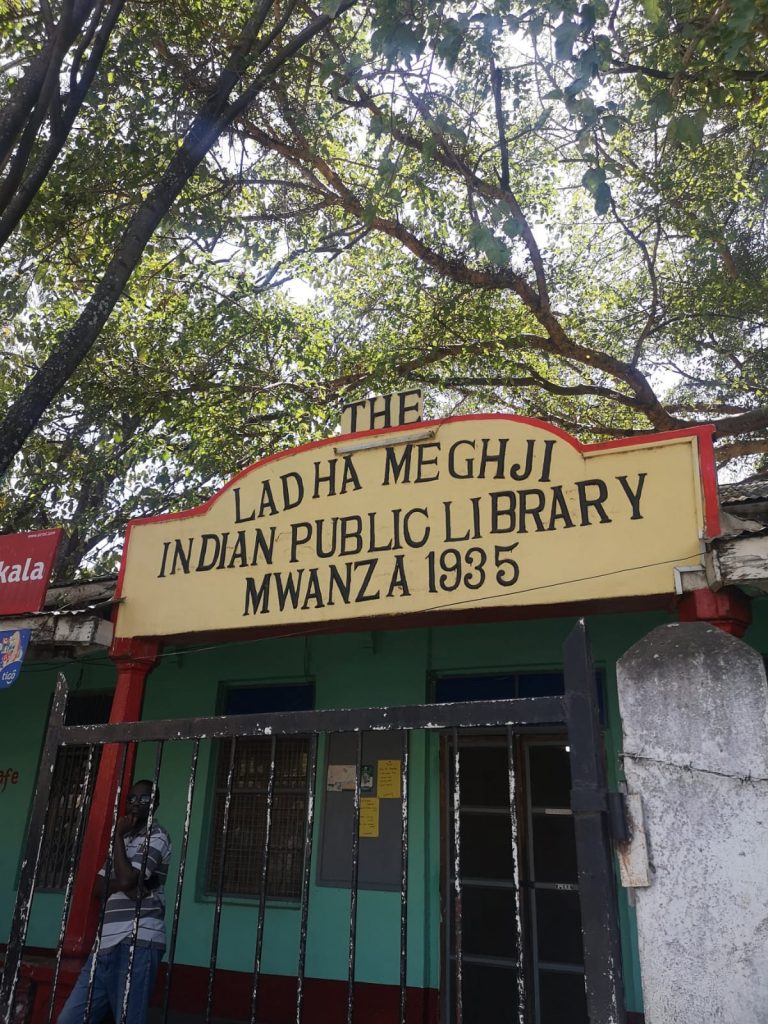
A photograph of the Indian Public Library, Mwanza, 2019
This is the main library in our town. It’s the first and oldest one library in our town, it’s still there. That’s why I took the photograph. It’s a very, very old library, about a hundred years old or something like that … it has all the Indian books, maybe there are some English as well, but first it was Indian, Gujarati and Hindi and Sanskrit like that, all sort of books.
At that time we used to go there because my mum used to want some books to read from the library … Now you feel it is a little bit dark and small, but still it is neat and all clean. It’s so nice, it looks old, but it is the same, completely the same inside. It is really still there.
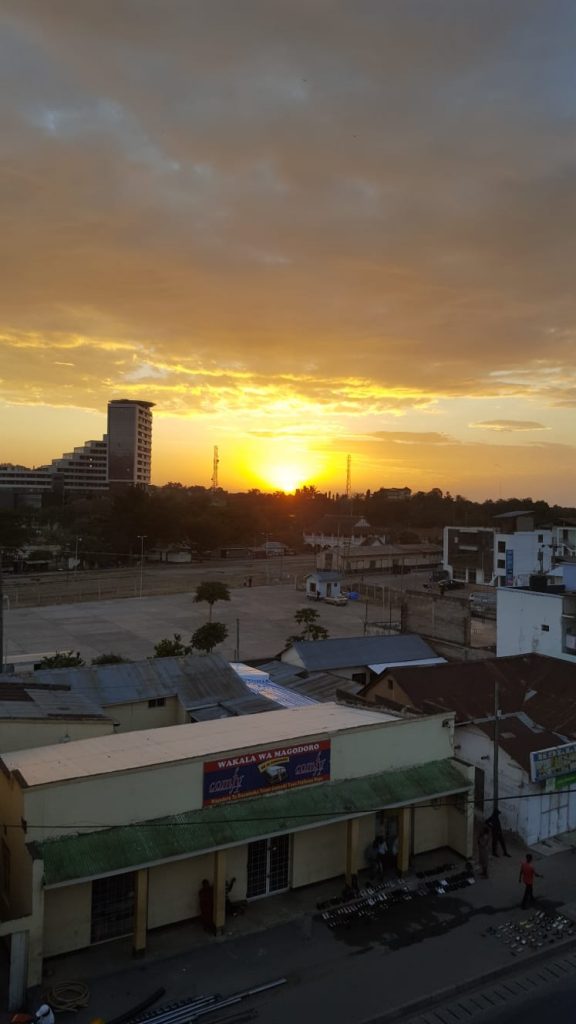
A Photograph of the sunset over Mwanza
I was so happy to go back to Mwanza. I was really excited to go there. It is exciting for me, I don’t know for others … [it is] where I am born and things comes back, everything what happened, and you can imagine in your mind, just like a film … Everything comes back, ‘oh, we used to do this here, we used to do this here, in the town, in the road we used to do that’. I can see now as well, I feel it. If I can close my eyes I can see everything, I can see.
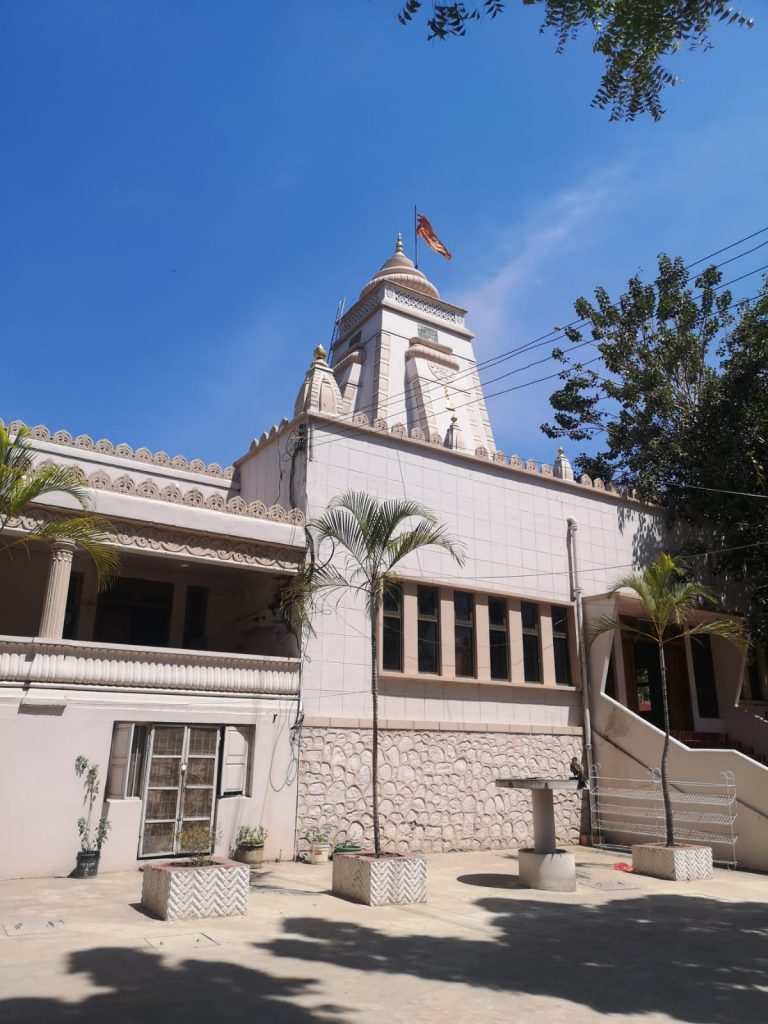
A Photograph of the temple in Mwanza, 2019
Before this temple was built, we didn’t have any temple, it was in somebody’s house and it was only one room, for a long time. This is the first big temple in East Africa, it’s the biggest one. … They built the temples over there, East Africa, Nairobi, Uganda, but this is the first in Tanzania or East Africa, first temple big one … When we had Diwali, we made all the sorts of snacks, my mum used to do all the snacks and everything, we can help out whatever we can do. All of our family friends, we used to go everywhere to give the snacks to them. And when they had a Eid party, they used to give to us, it was very nice.
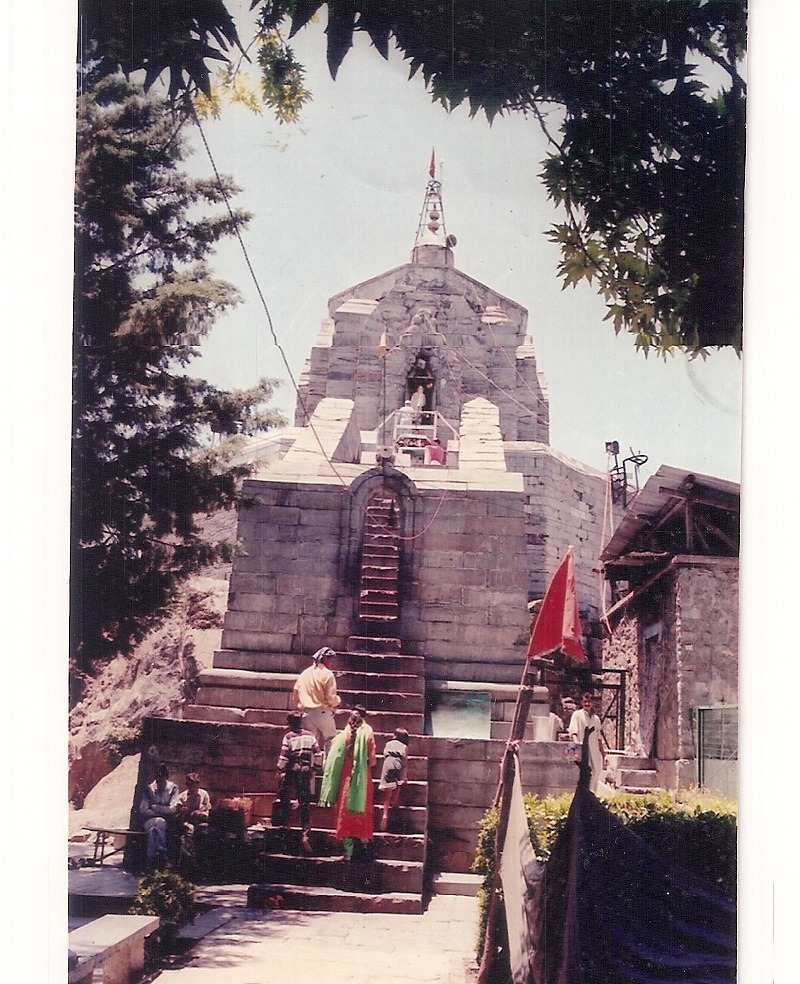
A Photograph taken during a visit to a temple in India
I think because I was born in Africa it’s home for me. … We came straight from Africa to London, I didn’t see India before. This is our country now, this is our home. First it was Africa, this (UK) is second, in India we just visit family. Maybe if I had visited India before then, then it might be like my home, I don’t know. Because wherever you’re used to living all your life, that’s your home now.
‘I haven’t seen these photographs for a long time. I had to dig them out. So many photos! It’s good memories. Sometimes I start looking at photographs and the memories come back. All the memories are there.’
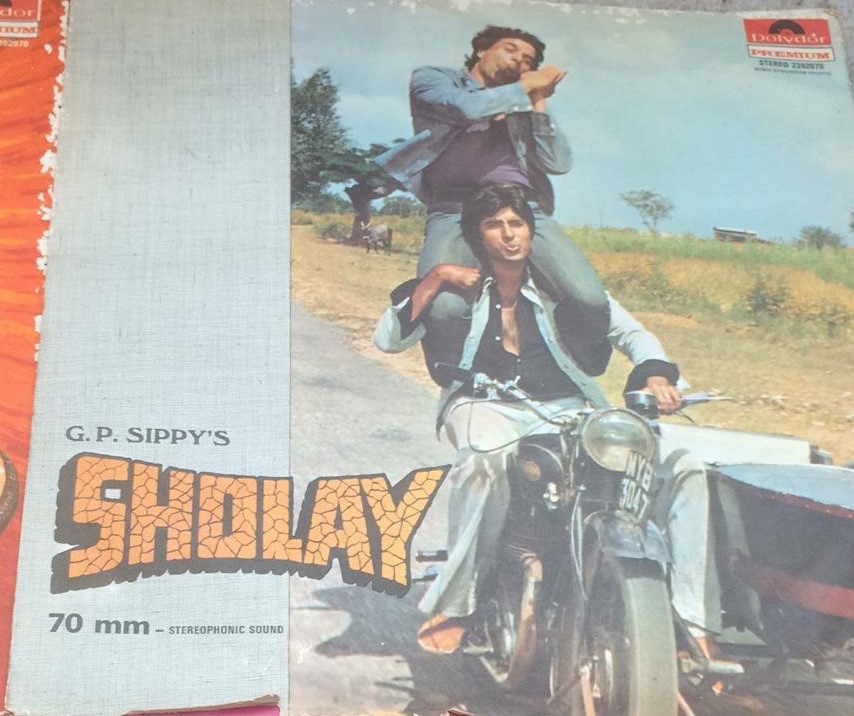
Photographs of Bollywood records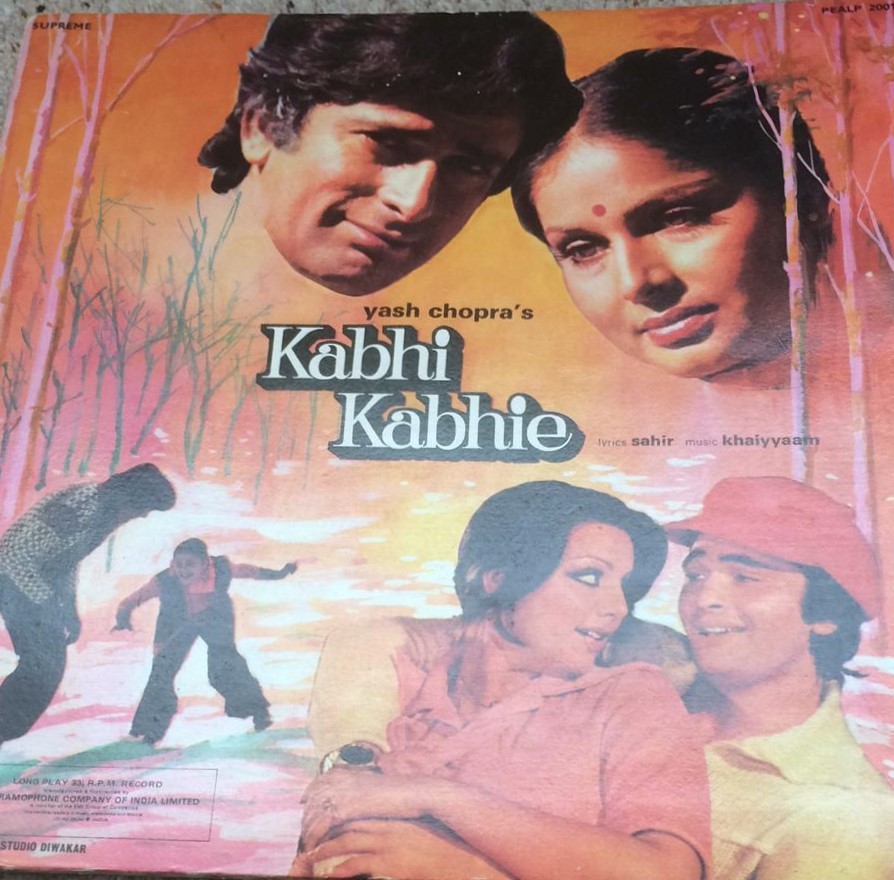
Bollywood songs used to come on every Sunday, my husband used to record it and I have a suitcase of the tapes. We used to play in car and in the house, all the old songs. I remember Kabhi Kabhi, I just kept it … Music is important to remember too. I like music, songs, religious songs, and stories … I feel good remembering those things. It’s nice to remember.
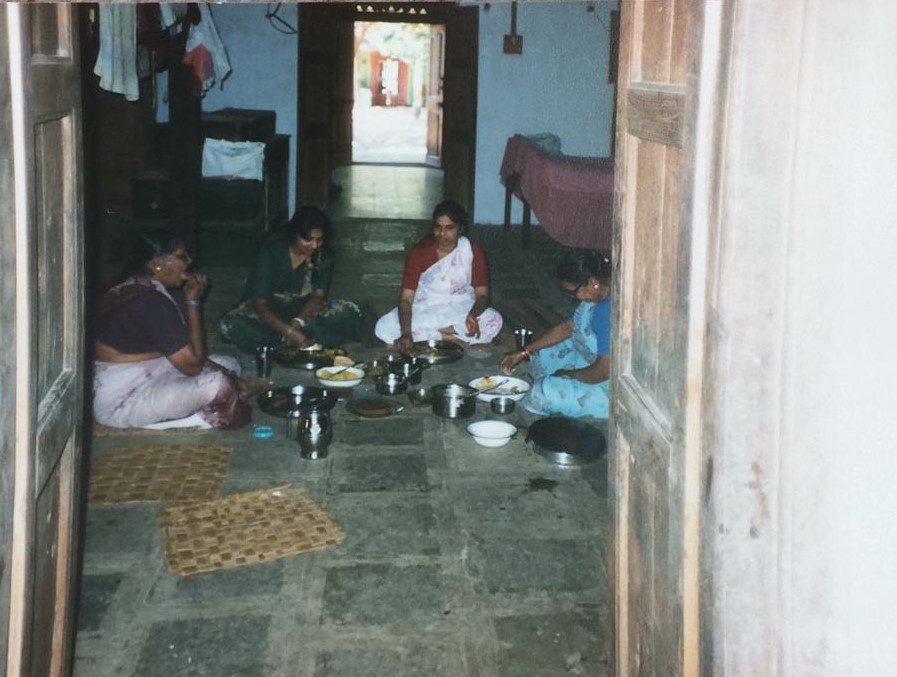
A photograph of lunch on a visit to the village, near Navsari, Gujarat
My two aunties are there, and me and my sister. I went back to the village after 25 years. It was totally different. When we came to visit, about 2 generations had passed on. I can remember the old people, but after 25 years, they were all gone. (Here) we are sitting outside the kitchen. It’s a dining area, but there’s a bed there. We used to eat there, sleep there, everything. That’s the place where we used to sit on the floor and my Grandma used to serve the food in the plate. I remember that she had a very, very small kitchen. They used to sit down on the floor and do the cooking on a burning fire.
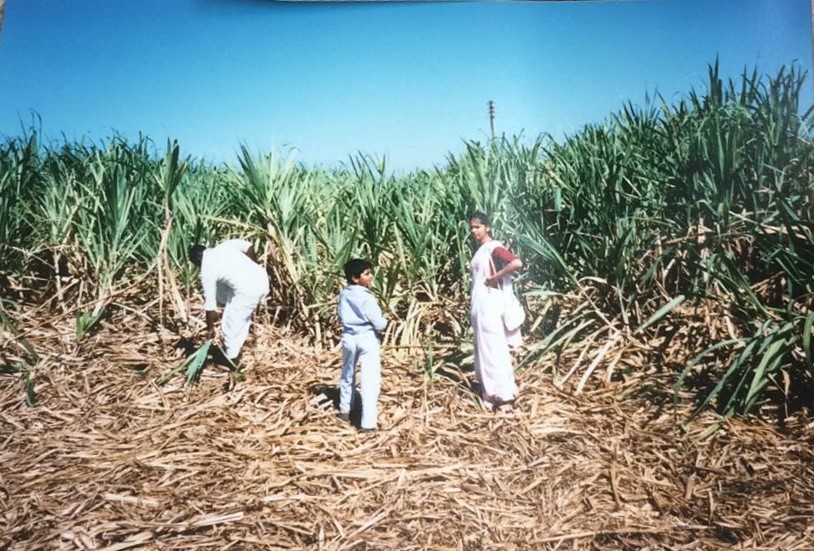
A photograph of a visit to the sugarcane farm
At the time we lived in India, we weren’t growing sugarcane, we grew rice, nuts, wheat. We lived in a very small village with not even 100 people, with all people who do the farming. There was not much transport, just a bull cart. Everything was handcrafted, shoes, baskets from their homes, how village people survived making things … We went to India from Kenya in 1960, everything was new for us, it was difficult to settle down in a small village for a while.
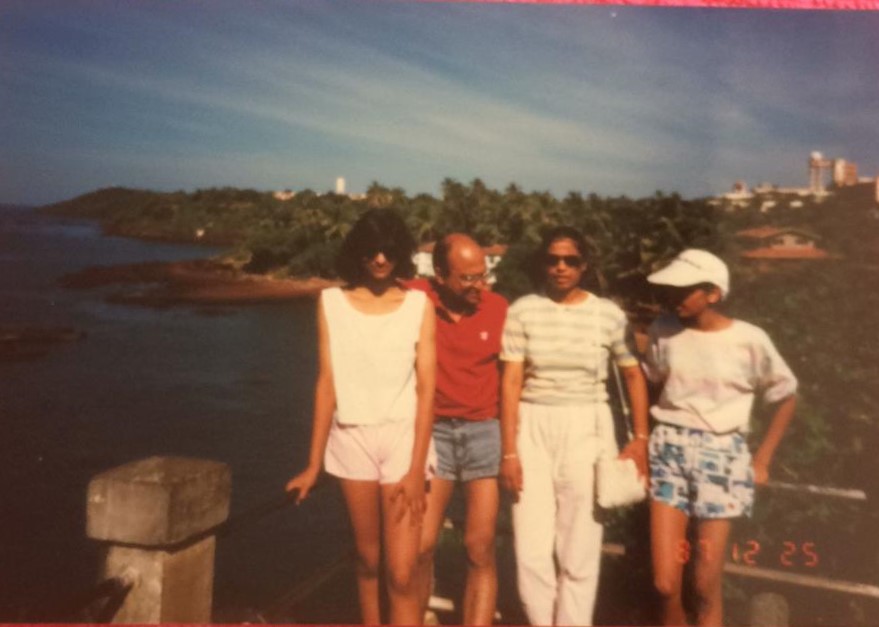
A Family Photograph, India, 1987
Me, my husband and my two daughters. We came to visit my village in a family group with our children from England to India, the first time since 1965. We were travelling, we went to lots of places, Jaipur, Goa. This was the first time I travelled around India. Now I have travelled around India by train … I love to go to India, I like to go. I like the food, lots of fruit, the vegetable market, all fresh and colourful, I love to see that. Different people, I like to see how people life. I like it!
‘It was a culture shock going from Kenya to India – food-wise, culture-wise, people-wise – everything was a shock. But when you’re young you adapt and adjust and accommodate.’
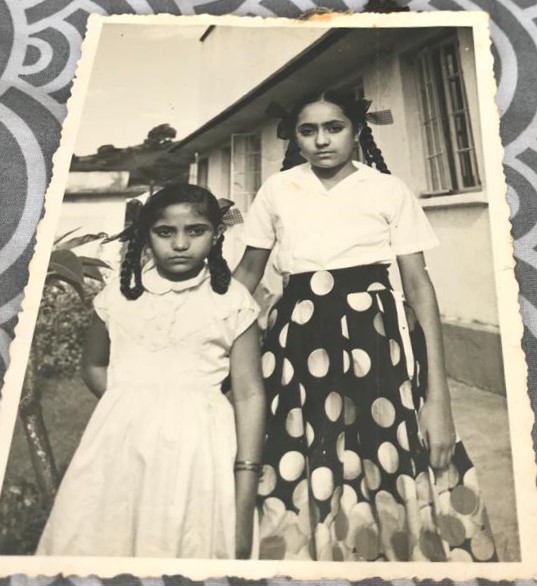
A photo of sisters at home in Kenya
Aged 4 or 5 years old. This is taken in the village in Kenya, with my sister. The house in the background, with lots of windows and a small garden where we grew lots of roses. Once we went to Porbander to study (aged 9) everything changed, we had to wear uniform, you couldn’t go out, you couldn’t do shopping, it was very hard at first … We used to go back to Kenya for a month every two years by ship. It used to take 15 days going and 15 days coming back, so we were with our parents for just a few days.
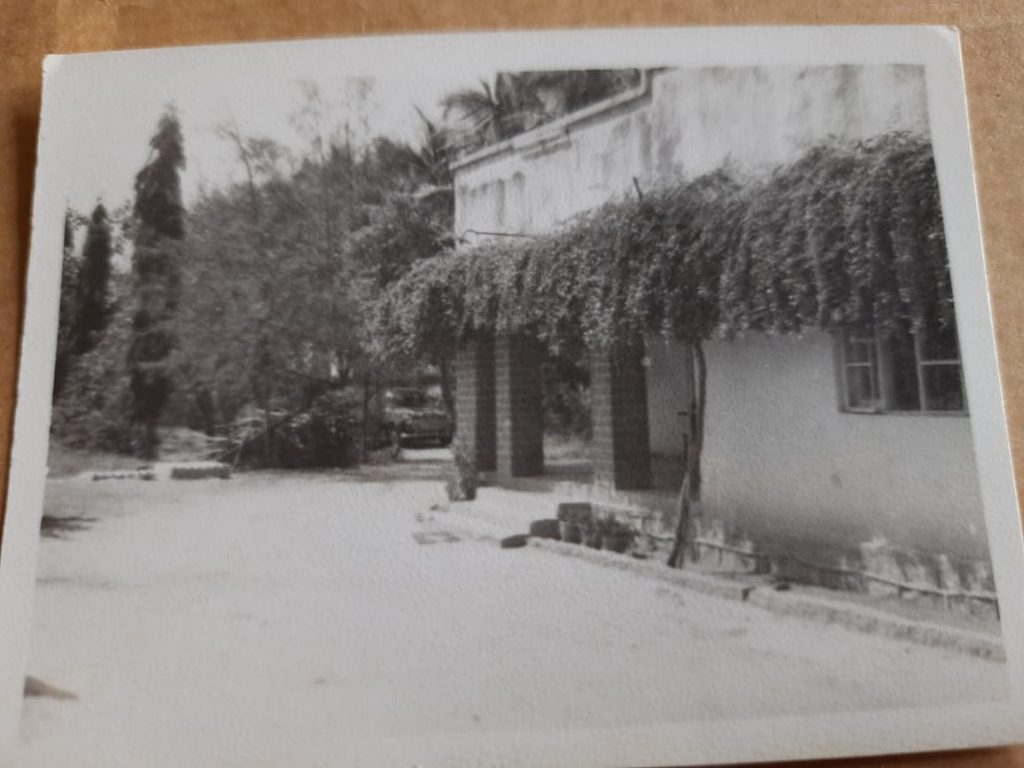
The Farmhouse in a village near Hyderabad, Telangnana
The Farmhouse in a small village near Hyderabad. We used to have about 30-40 acres of land, growing grapes and vegetables. We’ve still got the farm there. I used to live there, there was a veranda, and a lounge and a kitchen at the back, I remember all that. It was very nice there. Over the years it has developed so much. When I was there it was 1965/66, it was very rural.
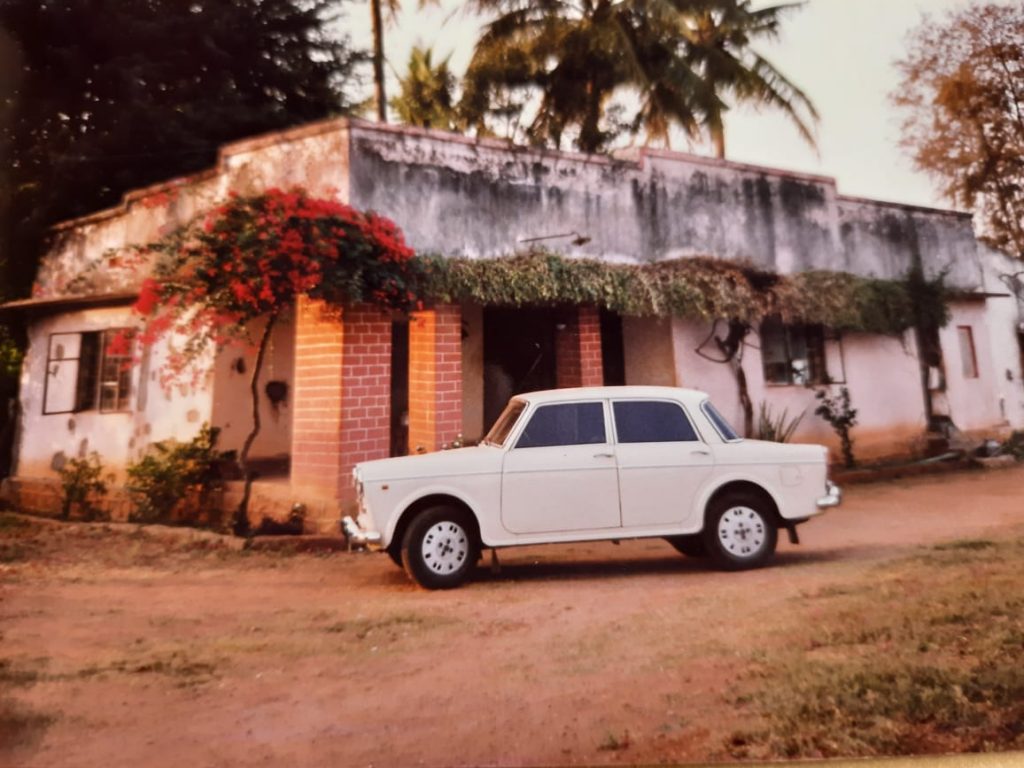
Our Peugeot 403 from Kenya to India
We brought our Peugeot 403 from Kenya to India. In those days you never could get the spare parts but Indian mechanics used to manage and made some parts and we used to run that car. And when we used to go into school, nobody had that type of car at that time. In those days, we used to feel very proud. I used to ask my brother ‘can you drop me there (to school), can you drop me there (in the car)?
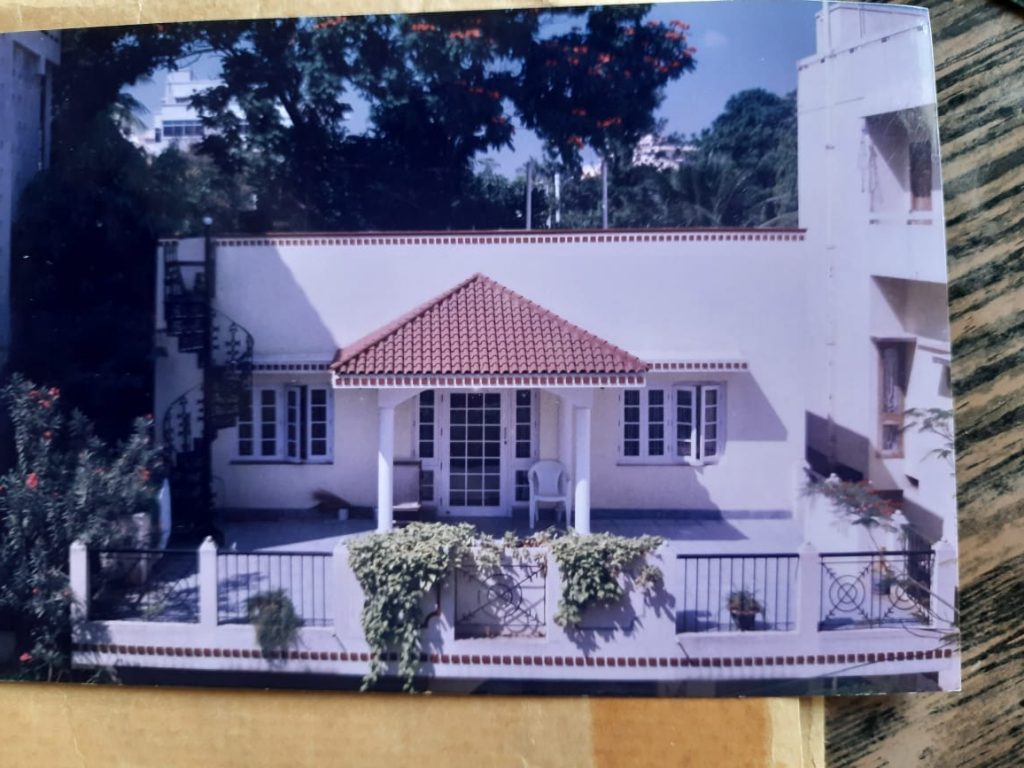
The most recent renovation of the family farmhouse
I last visited in 2013 … Now Loughborough is home. Because I’m happy here, I’ve stayed here for 25 years.
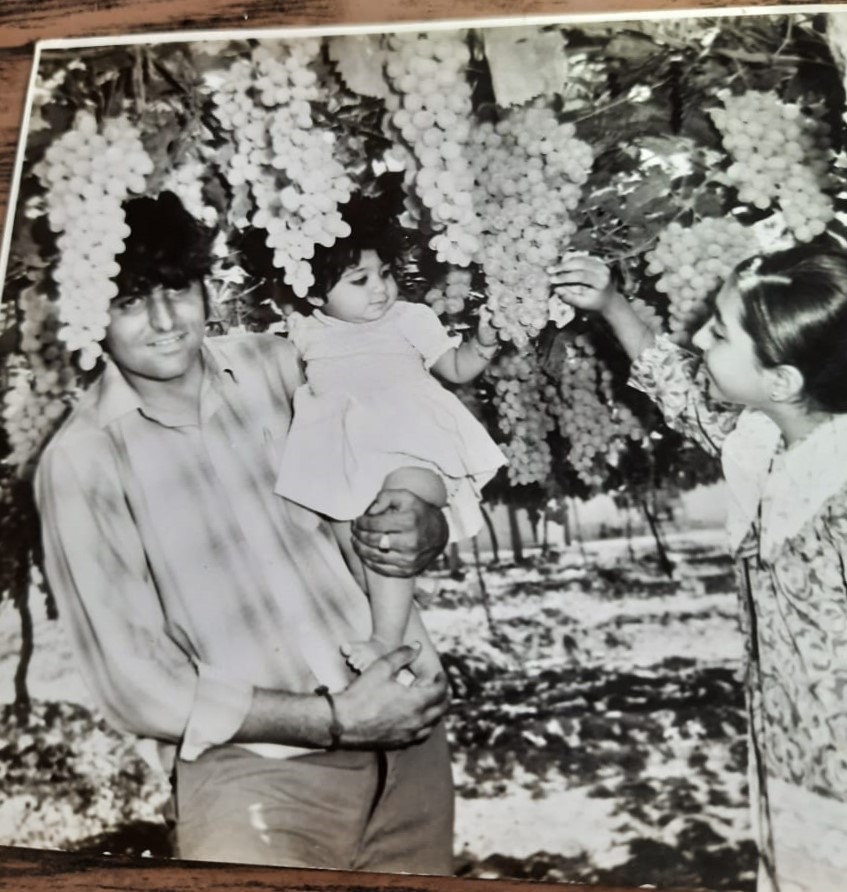
A photo from the grape harvest on the farm
A record yields more than 40 tons per acre, the big bunch in photo was weighing more than 3 and a half kilos’ (written on the back of the photo). This photo is of my brother carrying his daughter and our niece. We had zero knowledge of agriculture, we were all from Kenya but somehow they took an interest and did a lot of hard work there. That year was a very successful harvest that won an agricultural award.
‘Our roots are from India but I’m not from India. I’m from Africa’
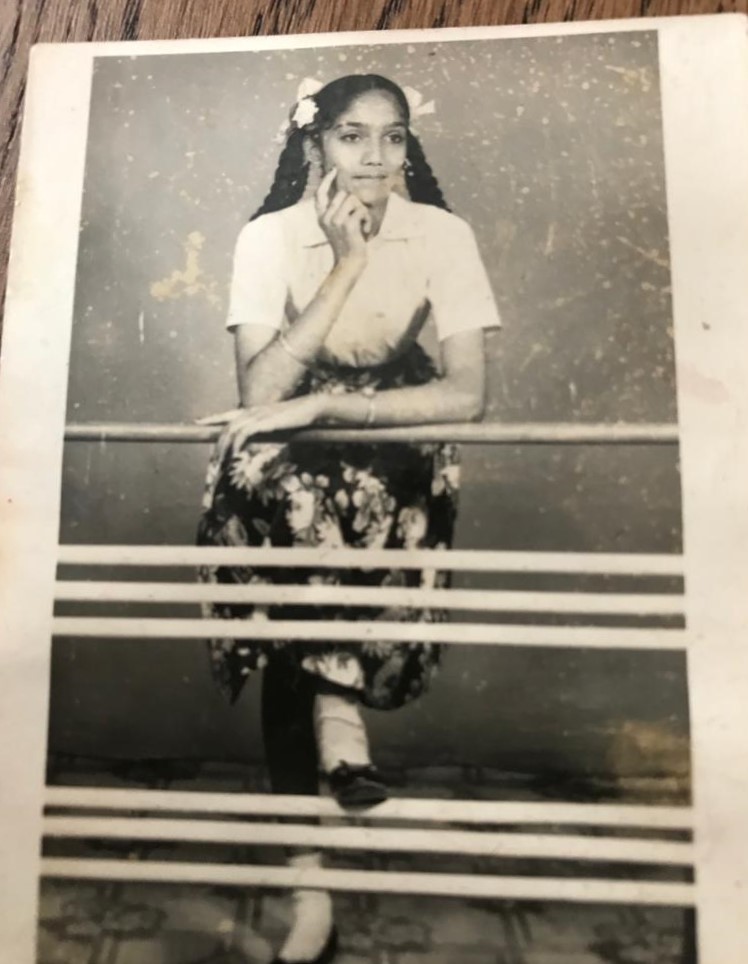
A portrait taken in a studio in Jinja, Uganda, aged 15/16
We liked to pose, we dressed up like this and took the photo. Uganda was a really beautiful country, with greenery everywhere. My parents moved to Uganda from India. I’ve been in this country since 1977. In Uganda I stayed for 20 years, in Tanzania for 10 years and all these years I’ve stayed in this country. This is my home.

A picture of me, aged 27, and my husband, Tanzania
Taken near our house, in the bushy jungle. We went for a walk with friends and took some photos there. We lived in the town of Tabora, it was a lovely town. We celebrated all the festivals together, Diwali, Navaratri, all the festivals, we all got together at the temple and enjoyed the festival there. Cooking, eating, dancing, singing, playing games, just like one big family.
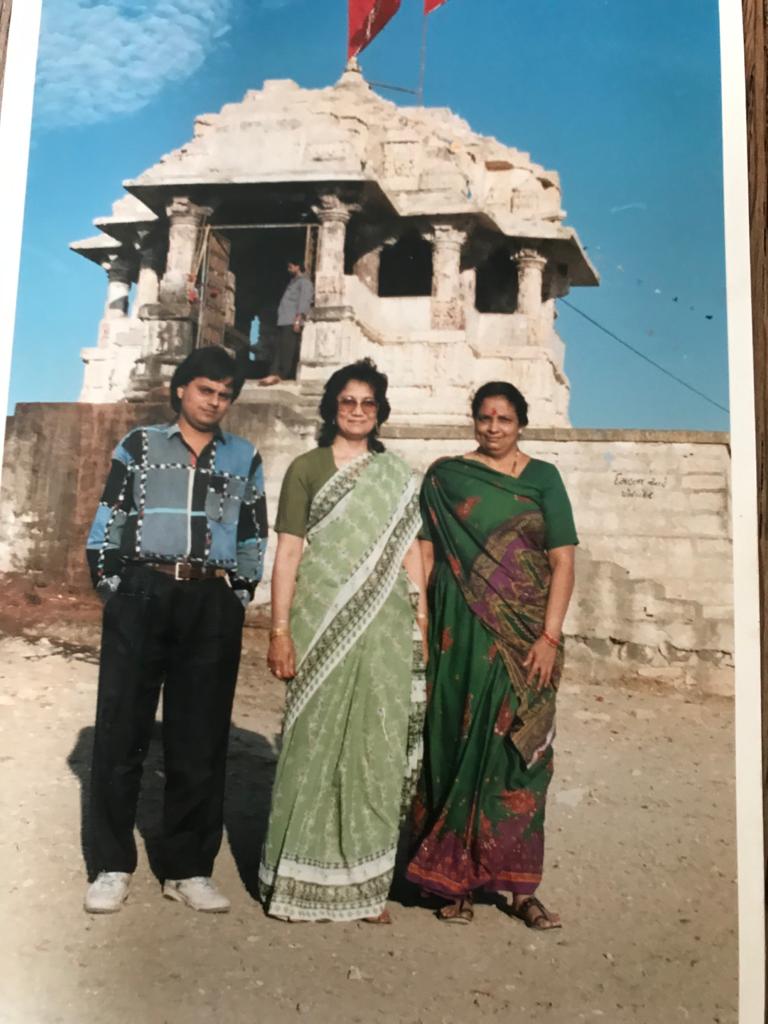
A photograph taken during a visit to India in the early 1980s
This is with my sister-in-law and nephew, who live in India. We go to India for holidays for 4 or 5 weeks. This was at a beautiful temple near Porbander, Gujarat, very high up and we had to climb many stairs. We visited many places and many temples … We have not forgotten our roots. We have moved so far but our roots are from India.
All rights reserved. These photographs must not be used or reproduced anywhere else.
These photographs have been published as part of this online exhibition with permission by the copyright holders. If you are unhappy with the use of any of these photographs, please contact j.hornabrook@lboro.ac.uk.

